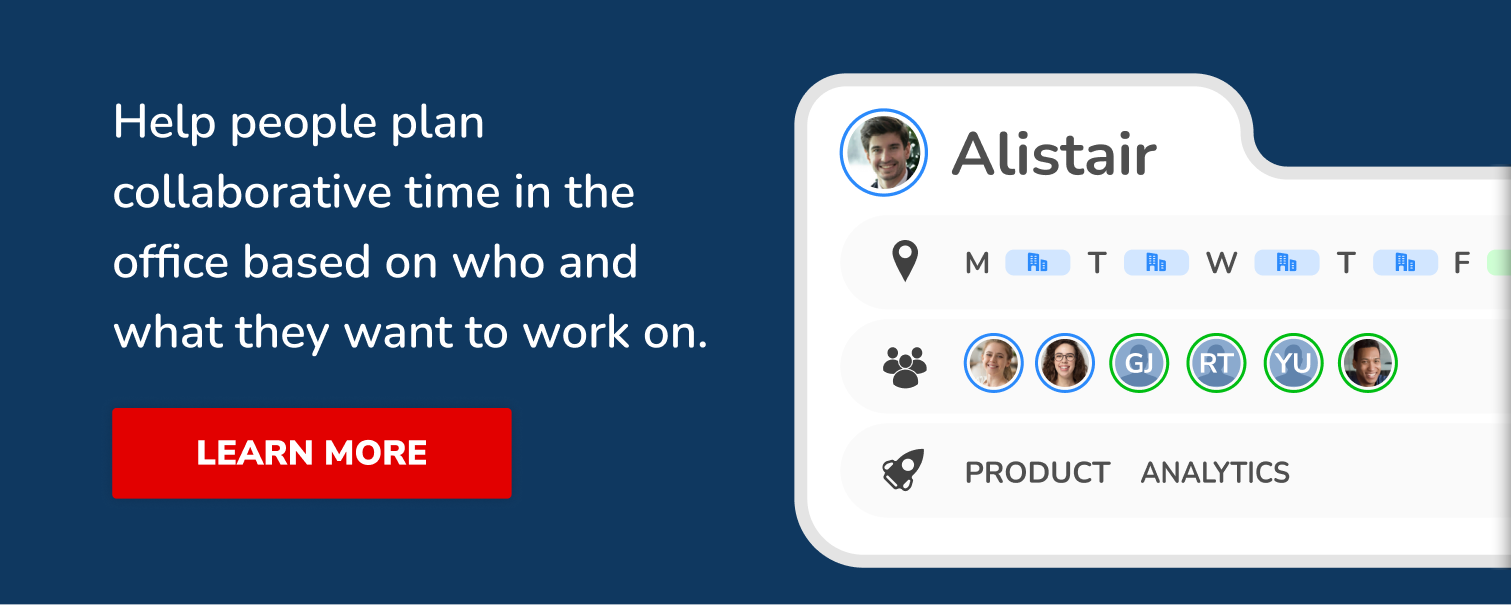The concept of "peak productivity days" has become a hot topic for modern businesses embracing flexible and remote work models. With hybrid schedules allowing employees to split time between home and office, identifying the most effective workdays to harness maximum motivation and efficiency has never been more complex—or important.
Conflicting opinions abound regarding when employees experience their prime performance and focus time. While a 2019 survey found 39% of workers consider Monday their most productive day, others suggest Friday for its uninterrupted focus or midweek days for their momentum. No definitive answer has emerged.
This article aims to explore the nuances around peak productivity rhythms across today's evolving work landscapes. By analysing the latest research around workday efficiency—from the motivating potential of fresh starts to the drain of meeting overhangs—we will uncover insights into when employees truly thrive.
Ultimately, the goal is to provide guidance on optimising hybrid schedules in a data-driven way. Tailoring individual working styles with team collaboration cadences allows companies to get the best of both worlds. The result is an empowered workforce able to flex their effort and expertise when it counts the most.
Which Work Days are Most Productive: Bouncing Back or Burning Out?

The common perception is that Mondays are the most productive workdays, fuelled by employees bouncing back from the weekend with renewed vigour and focus. Surveys reinforce this belief, with one reporting Monday as the “most effective workday” for over 40% of respondents.
However, opposing research muddies the water. A 2022 study by the National Bureau of Economic Research found that remote employees often experience a "Monday productivity dip," with a significant drop in activity compared to other weekdays, which could be attributed to "meeting hangovers" and difficulties adjusting after time off. This aligns with findings from RescueTime, which indicate that workers are most likely to do their most focused work on Tuesday, with productivity starting to decline on Mondays. Potential reasons cited for low Monday motivation include fatigue from weekend activities, stress anticipating the workweek, and facing a backlog of unread messages and meeting follow-ups.
So if not Monday, when do employees thrive? The data points to Tuesdays as a contender for the top productivity spot. Reasons include overcoming the Monday blues and settling into efficient rhythms, riding momentum from tasks completed the day before, and renewed focus on goals for the remainder of the week. Surveys of office-based employees also show Tuesdays, along with Wednesdays and Thursdays, as peak attendance days - allowing for greater in-person collaboration.
Wednesdays also fare well in research on workday efficiency. One study saw tasks completed fastest on Wednesdays compared to other midweek days. Surveys likewise highlight Wednesday as having one of the week’s highest productivity ratings in multiple industries. Explanations include hitting a midweek stride and momentum.
Thursdays follow closely behind, potentially explained by having the most employees physically present in offices for collaborative work. However, some studies point to attention beginning to drift toward the impending weekend by Thursdays for some portions of the workforce.
Lastly, the jury is out on Fridays. While offering the benefit of uninterrupted focus for remote workers, surveys reveal mixed perceptions of Fridays as both highly productive and challenging to maintain motivation. Either way, their productivity levels tend to vary significantly based on industry and working style.
While Mondays tend to be overhyped, each workday brings its own rhythms and optimal conditions depending on individual preferences, job types, and work environments. But the data suggests organisations would do well to bet on Tuesdays and Wednesdays for harnessing team-wide peak performance.
The Hybrid Conundrum: Navigating Peaks in the Home and Office

The rise of hybrid working introduces a complex productivity puzzle for modern organisations. While remote schedules allow for focused individual work, office days enable collaborative momentum. The challenge lies in aligning these peaks amidst competing priorities.
Research shows the benefits of both worlds. Employees report higher productivity on remote days due to fewer distractions and interruptions. Surveys also reveal over 75% of workers preferring to tackle complex tasks like analysis or writing from home.
However, in-office days unlock their own perks. Centralised workspaces allow for organic brainstorming, whiteboard sessions, and shoulder-to-shoulder teamwork. Relationship-building also thrives on site through face-to-face conversations.
As a result, managers walk a tightrope balancing individual working styles with collaborative demands. “When I’m home, I’m extremely productive. But then I feel out of the loop with my team,” a sentiment heard so often by managers it’s become known as the hybrid disconnect.
While people find flow in remote work, team or project based blocks of collaboration sessions on agreed days is when creativity and strategy align. People save their deepest individual work for other days when they are remote.
A 2022 study by Microsoft found that over 40% of the global workforce is considering leaving their current employer within the year, with hybrid employees struggling to juggle team cohesion with personal productivity rhythms. This sentiment is echoed in a report by Buffer, which states that while 97% of employees would like to work remotely at least some of the time, they also face challenges such as collaboration and communication. Workers also reported difficulty tracking project progress and needs for in-person coordination.
Ultimately each organisation must experiment to find its hybrid groove. The following solutions can pave the way for a thriving cross-functional workflow:
Data-Driven Scheduling
Analytics offer insights into when teams collaborate best. For instance, data from Asana's Anatomy of Work Index indicates that workers spend 60% of their time on work about work, such as emails and meetings, suggesting that optimizing collaboration times could significantly increase productivity. Furthermore, a study by Clockwise has shown that flexible work hours can lead to a 24% decrease in collaboration overload, allowing for more efficient use of in-office days. Assessing meeting patterns and project cycles can show optimum “together time.” Scheduling core in-office days around these collaboration events allows for organic creativity.

Flexible Focus Days
Conversely, guaranteeing employees set digital-free days or time blocks boosts space for deep work. Whether Mondays or Fridays, offering consistent home-based focus time lets workers maximise personal productivity. Protecting these periods prioritises both group and individual progress.
Communication & Connection
Hybrid models demand transparent communication between on-site and off-site members. Shared calendars, goal tracking, and virtual meetings keep everyone aligned. Most importantly, remote workers should be actively included in sessions happening in the office.
Reflections & Iterations
No hybrid solution is one-size-fits-all. Gathering ongoing feedback allows for fine-tuning team rhythms. Employees also need avenues to voice frustrations to prevent brewing resentment between office and home cohorts. A little empathy goes a long way.
By taking a data-backed approach, companies can pivot the hybrid challenge into a productivity superpower.
Unlocking Potential: Harnessing Data and Psychology for a Thriving Workforce
The quest to pinpoint the most productive work days has perplexed managers and workers alike. With the rise of remote and hybrid models, unlocking peak performance has become even more complex. Should companies bank on the motivating potential of Mondays or the uninterrupted focus of Fridays? The answers remain unclear.
Yet by leveraging data, research, and a keen understanding of workplace psychology, organisations can foster environments optimised for employee thriving.
Conducting Internal Research
Companies would benefit from surveying their own workforces to uncover personalised productivity insights. Assessing which days employees feel most motivated and focused provides a launchpad for tailoring schedules.
Likewise, gathering data around team collaboration patterns - peak times for meetings, brainstorms, and work socialising - spotlights the optimum in-office days. Companies can then build hybrid schedules around these collaboration spikes to maximise creative synergy.
Promoting Work-Life Alignment
The reality is peak performance aligns with peak wellbeing. Whether offering flexible schedules, remote work options, or resources for healthy habits, companies play a key role in employee vitality.
Beyond physical health, promoting psychological safety and work-life balance boosts engagement and creativity. Employees who feel secure, valued, and empowered drive business success.
Fostering Open Communication
Hybrid models thrive on transparent communication and inclusion. Providing open forums for employees to voice questions, concerns, and suggestions allows for continuously optimising team coordination.
Likewise, clearly conveying company vision while celebrating employee achievements fosters trust and camaraderie. The result is a culture of collective purpose.
Empowering Personalised Schedules
In the end, every employee has unique energy levels and working styles. Equipping staff with data around their peak productivity times, along with tools to plan schedules accordingly, returns agency into their hands.
The future of work offers unparalleled flexibility. Let’s solve the when and where of peak performance - together.
Conclusion: The future is flexible
The quest to decode peak performance has entered a new era amidst tectonic shifts in how, when, and where we work. While the research highlights promising patterns in employee energy and efficiency, no single formula applies across diverse industries and working styles.
Yet a few definitive truths emerge. Employees crave flexibility to align working rhythms with personal needs. They thrive when empowered to balance focused effort with creative collaboration. And teams are most productive when backed by psychologically safe, supportive cultures.
Ultimately, as hybrid models become the norm, the future points toward adaptable systems optimised for worker wellbeing. Companies must continue gathering data, listening to employees, and evolving approaches to distributed work.
By anchoring flexible frameworks around inclusive communication and compassionate leadership, the potential for human achievement has no limits. The future is bright for a workforce finally able to flex its wings.
About Author
Graham Joyce is co-founder of DuoMe, a flexible working advocate and a frequent panellist/commentator on the issues of flexibility or hybrid working.







